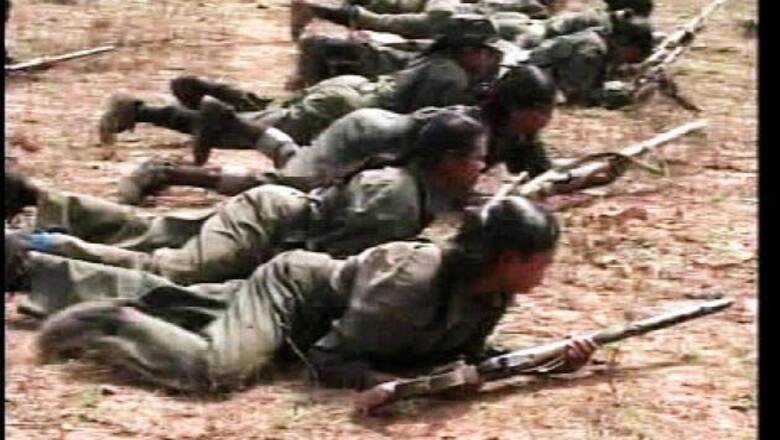
views
Here are possible options for the government to tackle the decades-long insurgency which has killed thousands of people, mostly police, and has now spread to rural pockets in 20 of the 28 states.
Military devises strategy without getting involved
A likely scenario is that the government asks military strategists to take over operations planning and train police and other government forces in anti-guerrilla warfare. The military is not directly involved now in tackling the insurgency, which virtually keeps India out of a large swathe of mineral-rich central and eastern regions with business potential worth billions of dollars.
This move could see operations brought under the authority of a senior military commander. It could involve the use of air force planes for non-combat operations such as casualty evacuation, use of the military intelligence apparatus and the army's expertise in clearing land mines, which have killed more security men than gunfights. The government has previously used reconnaissance drones but use of any air power is unlikely.
The strategy will save the government the embarrassment of conceding the failure of police while also infusing the offensive against the rebels with new expertise.
The ruling Congress party is aware that failure to tackle the Maoist insurgency quickly could hurt its prospects in eight state elections lined up over the next two years.
Military is called in
This scenario is highly unlikely.
India's ill-equipped and under-trained police, though much larger in numbers, have failed to take on the rebels who have an estimated 20,000 combatants, including up to 6,000-8,000 hardcore fighters.
But it is unlikely the government will turn exclusively to the military to fight the rebels and back the offensive with air power which could result in large-scale civilian casualties.
A purely military offensive could further alienate the poor in the region and send them deeper into the folds of the Maoists, and potentially lead to a loss of votes for the Congress.
There is support for the Maoists among a section of urban intelligentsia and leftist liberals who warn that military action could breed further violence that spins into a civil war with the rural poor on one side and the Indian state on the other.
India's military is involved in counter-insurgency operations in the disputed northern region of Kashmir and in northeast India, and in the past, was involved in the northern state of Punjab.
In most cases, the presence of the military has been resented by locals and soldiers have been accused of human rights violations and other excesses. Some Congress allies, who face state elections over the coming year, may not back a move to involve the military for fear of upsetting voters.
Government persists with police action
This option is fast becoming unfeasible.
A string of deadly attacks this year has exposed the limitations of police in tackling the insurgency. In many of the deadly attacks, standard operating procedures such as changing patrol routes and backup reinforcement for patrols were not followed.
Most police deaths have occurred because of a lack of proper training and limited knowledge of the "red corridor" stretching from Andhra Pradesh to Chhattisgarh and into West Bengal, bordering Nepal and Bhutan.
If Prime Minister Singh persists with the current police action, he runs the risk of being seen as weak in tackling violent groups and his Congress party's prospects in upcoming state elections could be hurt.













Comments
0 comment